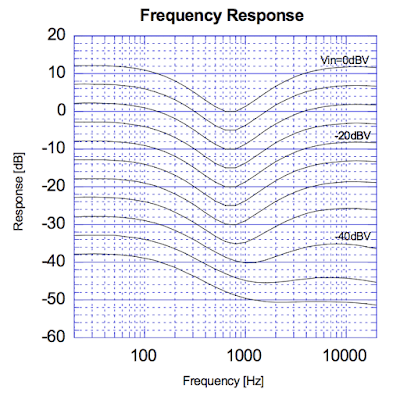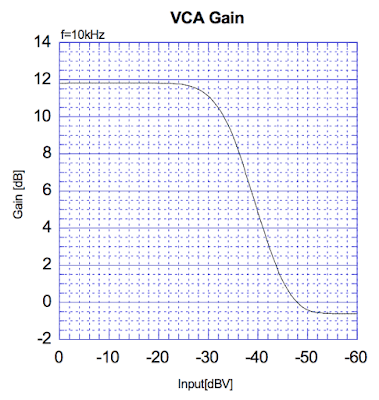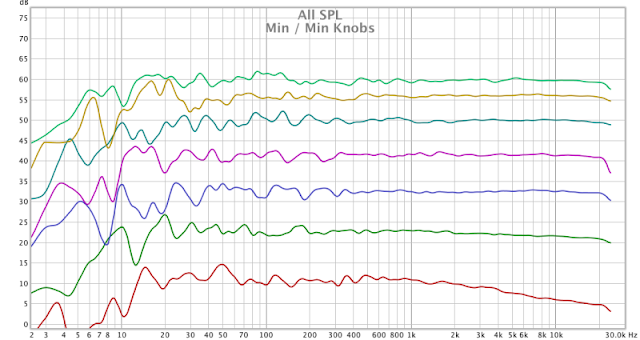Mikhail Naganov
BBE 282i Sonic Maximizer Measurements
The Need for Tone Controls
I’m reading the new edition of awesome F. Toole’s book “Sound Reproduction.” Here, in Chapter 4.4 he grieves for the demise of tone controls on modern hi-fi preamps. Indeed, I’m recalling domestic vintage radio + turntable combos my father and his friends had—there always were “bass” and “treble” knobs. More expensive systems featured multi-band graphical equalizers. Definitely, at that era everybody understood that both program and the reproduction chain are not ideal, and some tonal correction may be required.
However, the aspiration for a “clean” reproduction path shaved all the extras off (they contaminate the sound!), and left us only with volume controls on most of hi-fi units. This would work if all recordings were perfectly balanced, and our hearing were linear (or we were always listening at the same reference volume level). But since this is simply not true, it’s often desirable to shave off some extra high frequencies that were added by the mixing engineer in order to “reveal” the vocals, but ended up sounding really harsh, or to add some bass when listening at low volume levels.
BBE Sonic Maximizer Mystery
I started searching for a desktop unit that would implement just tone controls, not a full equalizer—they are bulky and require too much tweaking. But due to the aforementioned “purity” trend in audio equipment, it’s next to impossible to find such an unit. Of course, I could just implement the tone controls as a DSP plugin, but at least with Pulse Audio and LADSPA, it’s not trivial to add real-time controls to it. Also, virtual knobs never feel as good as physical ones.
Somehow, I’ve stumbled upon the family of units jointly called “BBE Sonic Maximizer” featuring just two control knobs—a good sign! However, the labels of the knobs are quite cryptic: “Lo Contour” and “Process”, and there was nothing about “tone control” in the description the unit, but rather lots of promises in marketing-speak about achieving audio nirvana once this unit is inserted into recording or reproduction chain. That looked really suspicious.
Even more suspicious were reviews on different forums (mostly related to sound recording), where people were either raving about how this unit improves the sound of recorded drums and makes their sound “punchier”, or advising not to waste money on this unit because it’s snake oil. A lot of YouTube videos demonstrate processing results, and from watching them it seemed like the unit really adjusts the tone, but then there were always people saying that it’s not a tone control, however they couldn’t provide any specific details.
Digging into Details
I was looking for any objective measurements of the Maximizer, but finding none. At last, I’ve found three manuals: one for an older 802 unit, another for a newer 882 unit, and another for the modern version 882i.
The manual for 882i is the most useless one—it only says about “envelope distortion” occurring in speakers that this unit is designed to solve, provides unit connection schemes, and brief technical specs stating some distortion figures, and the fact that tone correction happens at 50 Hz and 5 kHz, with maximum attenuation of +12 dB.
The term “envelope distortion” is equivalent to “group delay distortion” which means adding non-uniform delay to different groups of frequencies. According to “Electroacoustics” book by M. Kleiner, horn and transmission line speakers are susceptible to noticeable group delays. Seems like the BBE unit can actually be useful for PA and old studio monitors if you don’t have a DSP processor. But I think modern speakers and especially modern powered studio monitors have required compensation circuits built-in.
The manual for 802 actually explains what the unit does in terms of group delay. The audio signal is split into 3 frequency groups by dividing the spectrum at 150 Hz and at 1200 Hz. The LF group is delayed by 2.5 ms, the Mid-Frequency (MF) group is delayed by 0.5 ms. The HF group is left intact.
As for tone correction, the LF group is simply boosted according to the “Lo Contour” knob. The amount of HF boosting actually depends both on the “Process” knob and the RMS level of the MF group. This is the most intriguing stuff.
Here the manual for 882 comes to help. Very atypically for commercial electronic products, this manual contains the actual electronic circuit scheme of the device. It shows that the heart of the 882 is NJM2153 chip which also has a technical manual. Finally, we can see some graphs!
This plot supposedly shows the amount of frequency correction applied when both “Lo Contour” and “Processing” knobs are at the maximum position. The LF boost remain constant +12 dB regardless of the input signal level. Whereas the HF boost depends on the input signal level. Here is another graph, a “cross-section” at 10 kHz:
Interestingly, that the description of the NJM2153 chip doesn’t align well with what the manual for the 802 unit is saying. The chip description says that the amount of HF boost depends on the overall input signal level, but the 802 manual states that it depends on the RMS of the MF group only. Perhaps, this implementation detail was changed from 802 to 882.
It’s also interesting what happens when the “Processing” knob is at the minimum value—does HF group get attenuated if the input signal level is low, or maintains the input level? On the EC schematics, the VCA is controlled from directly from the signal level meter, so it should not depend on the “Processing” knob. But it’s better to check.
Measurements
I’ve bought an unbalanced desktop version of the BBE Sonic Maximizer—model 282iR. From scarce technical specs revealed in the manuals, it seems to use the same processing pipeline as 882 or 882i does, but is made in a different form factor, and with combined knobs for left and right channels. Also, as I’ve said, 282iR uses unbalanced RCA or 3.5 mm inputs and outputs, so it has 3 dB lower output level than 882i which uses balanced XLR connections.
Since the BBE unit is an analog line-level signals processor, it’s quite trivial to measure it using an ordinary sound card. I was using MOTU Microbook IIc.
Group Delay
Let’s start with group delay. It remains the same for any input signal level, and the only parameter that affects it is whether the unit is in bypass mode:
The bypass mode is the red plot, the green plot is when processing is engaged. As we can see, in processing mode the unit indeed adds ~2.5 ms group delay to LF, and ~0.5 ms to MF (as an average value). Thus, the unit adds some GD distortion even when it is in bypass mode.
THD
The manual for 282i states < 0.1% at -10 dBu input across the entire 20–20000 Hz range. That’s actually quite a lot (not good). In fact, it seems to be an order of magnitude better:
This plot shows the 2nd harmonic. The black plot is loopback measurement for Microbook. Red is bypass, green is processing mode with both knobs at the minimum setting. As we can see, the level with processing enables is < 0.01%.
Channel Balance
Since the 282i unit is designed to process both channels at once, I’m expecting the unit to maintain the original balance of the input signal.
As I’ve checked, in bypass mode the balance is held very much precisely. Looking at the 882 unit schematic, the bypass mode just directly connects output to input, so that’s what I would expect. In processing mode, the difference is about 0.1 dB at 1 kHz—not too bad, but could be better.
Frequency Response
Finally, the most interesting part. Since the FR of the unit changes with the signal level, I was using Microbook’s hardware white noise generator and was performing a real-time FFT analysis in Room EQ Wizard. The method was to change the level of the noise, and observe how it affects the output frequency response. The resulting curves are not that pretty as obtained from sine sweeps, but still reflect the trends.
As it can be seen from the graph, the frequency response plots at maximum “Lo contour” and “Processing” knob setting indeed resemble of those from the NJM2153 chip manual shown above. The level of bass boost remains unchanged, while the level of HF boost falls down once the sound level becomes low, thanks to the attenuator controlled by the input level monitor.
With the knobs at the minimum position, the HF range can even be attenuated for low power signals.
Conclusions
Recall that I’ve encountered the BBE Sonic Maximizer while looking for a tone controls device. So, can Maximizer be used as a tone control? Somewhat. It definitely can boost LF or HF, which is good. As for the opposite direction—cutting, it depends. For bass it’s not needed as often. For treble, I’m curious how the variable attenuation actually helps. Need to check with actual commercial recordings.
Another thing—the group delay. It’s definitely not needed for headphones because over-ear models anyways use a single driver. Does the group delay introduced by the unit affect the sound negatively? I will need to check with wide spectrum transients like drums and percussion.
And some additional distortion that the unit adds when processing is engaged. Certainly, 0.01% of 2nd harmonics isn’t fatal, but specs of Grace SDAC and Phonitor Mini feature at least 10x less distortion. Although, we can say that those add some warmth to the sound. Again, need to do some listening.





